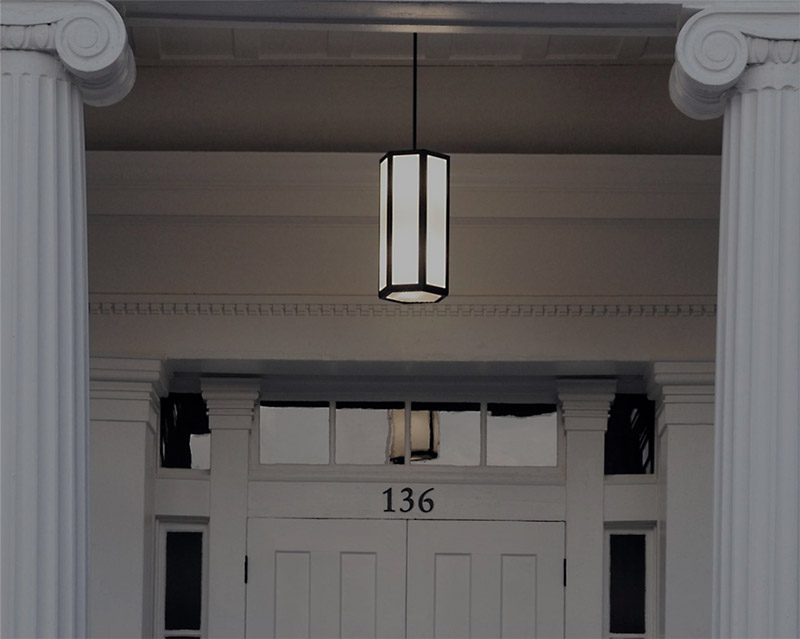Old Made New

In the 167 years since it was built as a space for debate-society meetings, Phi Gamma Hall has taken on many looks and played many roles in the history of Emory. Now, after extensive renovation, the elegantly plain building anchoring the northwest corner of the Oxford College Quad has still another incarnation, this time as a space dedicated to academic and public events.
“We have taken care and attention to ensure that Phi Gamma’s structural integrity and usefulness extend well into the future,” says Doug Hicks, dean of Oxford College. “Most of all, we are delighted that this historic building will once again be an eminent space for public conversation and the exchange of ideas.”
Phi Gamma is Emory’s oldest academic building, built when Emory College was located on its original campus in Oxford almost seventy years before its move to Atlanta in 1919. Student and alumni members of the Phi Gamma Literary Society began raising funds for its construction as early as the 1840s. The building’s white-marble cornerstone commemorates their efforts with a Latin inscription attesting that the Phi Gamma Society was established in 1837 and that the cornerstone was laid on February 22, 1851.
Emory College closed during the Civil War, and in 1864 both Phi Gamma Hall and Few Hall, the building across the Quad housing the rival Few Literary Society, served in the care of Confederate wounded brought to the Covington area following the Battle of Atlanta. (Oxford legend holds that the ghost of a Confederate nurse is sometimes seen outside Phi Gamma Hall.)
About 1948 Phi Gamma’s central room was restored and made into a small auditorium, which was also the scene of dances in the 1940s and 1950s. In 1980 it became a black-box theater and the college’s main venue for dramatic and other performances until 2003 and the completion of the Tarbutton Performing Arts Center, located across the Quad from Phi Gamma and attached to Few Hall. Not wanting to leave Phi Gamma vacant, the college designated it as a 24/7 student study space, keeping that purpose until late 2017 and the start of the current restoration.
With the project’s completion, Phi Gamma Hall has come full circle as an academic building, dedicated again as a place for public discourse.
“This project honors the history of Phi Gamma Hall and its initial use as a debate hall. But in a world where thoughtful, respectful debate seems all too uncommon, our reopening of Phi Gamma Hall also celebrates the principles of free speech and academic and intellectual freedom.”
It now shines aesthetically: The large historic windows are refurbished and the heart-pine floor and lath-and-plaster walls are restored. Etched and bronzed mirrors hang over the fireplaces, and the foyer features photographic elements celebrating Oxford’s place and history.


